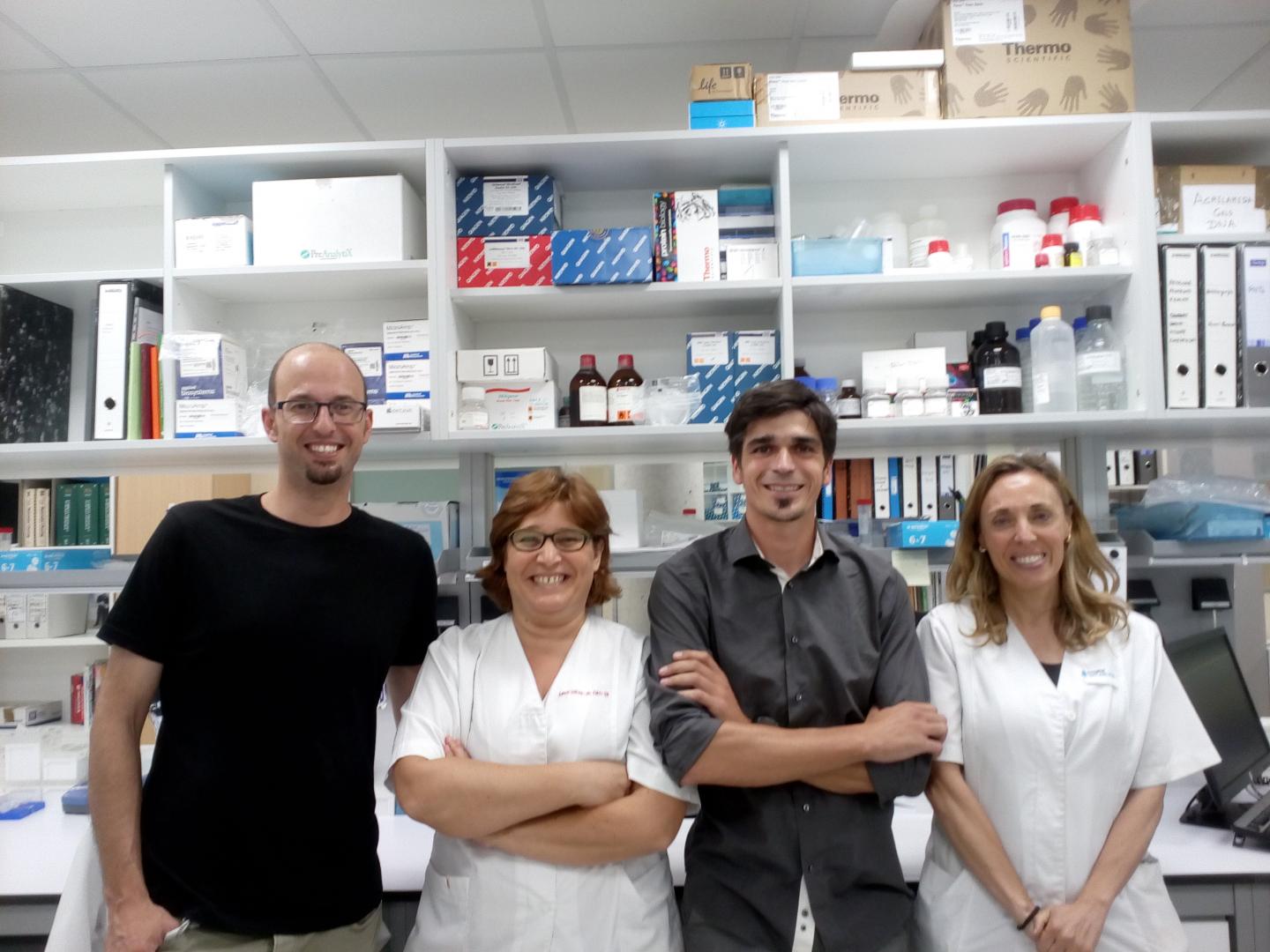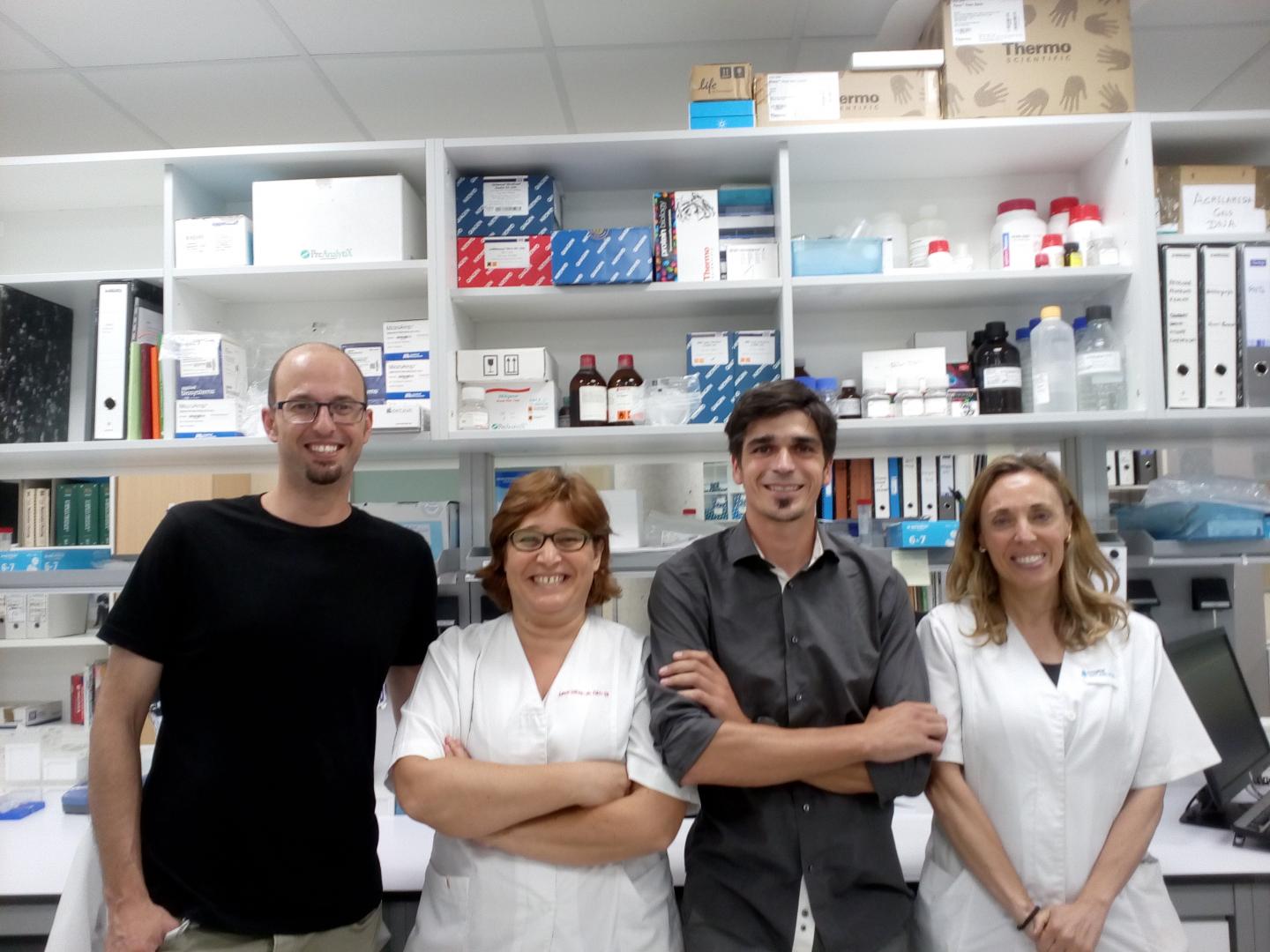
Credit: IDIBELL
A translational, multicenter study carried out by research groups of the Bellvitge Biomedical Research Institute (IDIBELL), San Juan de Dios Hospital (HSJD), the University of Barcelona (UB), Clinic Hospital (IDIBAPS), the University of Vic (UVic), Santa Creu i Sant Pau Hospital (IIB Sant Pau) and the thematic area of Rare Diseases (CIBERER), has unveiled the potential of D-serine — a dietary supplement — to improve the neuronal function of a patient with a mutation of the glutamate receptors associated to atypical Rett syndrome with severe encephalopathy. This collaborative study, led by Dr. Xavier Altafaj (Neuropharmacology Unit, IDIBELL) and published in Biological Psychiatry, opens a new range of therapeutic options for patients with mutations that affect glutamatergic neurotransmission. Likewise, this study has allowed to establish a unique and novel experimental approach that is currently being transferred to an ambitious project that aims to design predictive algorithms that lead to personalized treatments that can be quickly transferred to the clinical practice for other mutations that affect glutamatergic transmission.
"The story begins about three years ago, when Dr. ngeles Garca-Cazorla, a neuropediatrician at San Juan de Dios Hospital and professor at the University of Barcelona, contacted us regarding one of his patients, who presented an atypical form of Rett syndrome with severe encephalopathy", explains Dr. Xavier Altafaj, leader of the study and member of the Neuropharmacology Unit IDIBELL-UB, led by Dr. Francisco Ciruela. While assessing the exome of this patient, the geneticists of San Juan de Dios (Dr. Judith Armstrong) identified a mutation that affects the coding gene for a subunit of glutamate receptors of the NMDA type. "Our research group is specialized in the study of these type of receptors, which in physiological conditions are associated with learning processes, memory, neurodevelopment and neuronal plasticity, and which are the main actors in excitatory transmission and neuronal function", Altafaj adds.
The HSJD medical team and Dr. Altafaj's group were interested in finding out whether the patient's mutation could be responsible for for her disability to some extent. To do so, the team of Dr. David Soto (UB-IDIBAPS) carried out several functional studies that allowed them to prove that the mutation drastically reduces the activity of the glutamate channel. With these results, the group of Dr. Altafaj started a second battery of cellular, physiological and biochemical studies with the participation of Dr. Carles Sindreu (UB), Dr. lex Bays (IIB Sant Pau) and Dr. Francisco Ciruela (IDIBELL-UB), to characterize the consequences of the loss of function of mutated receptors.
At the same time, computational studies conducted by Dr. Mireia Olivella (UVic) revealed that the mutation of the glutamate receptor sequence — potentially responsible for the patient's symptoms — modified the receptor structure, decreasing the size of the canal's pore and thus its affinity for glutamate, as it was subsequently validated at the experimental level. Glutamate is the main excitatory neurotransmitter of the central nervous system; Consequently, if the channel activity of this receptor is impaired, calcium intake could be reduced, leading to a clear decrease in neuronal function.
"Bearing everything in mind, we had two options," says Dr. Altafaj: "either we spent years designing a personalized drug or therapeutic approach to specifically correct the hypophysiologicality of the affected receptors, or we looked for an existing drug or compound able to increase the functionality of these receptors, forcing their activity and improving calcium intake. We were faced with a time-dependent situation, since neurodevelopmental processes are critical at the patient's age, and consequently we went for the second option."
In order to be activated, NMDA receptors require the simultaneous presence of glutamate and the amino acids glycine or serine, which act as co-agonists. Knowing that glycine also acts on other types of receptors, IDIBELL researchers proposed to administer D-serine — an already commercialized dietary supplement, easy to administer and without side effects — to improve receptor activation and rebound glutamatergic transmission. In vitro studies in cell lines and primary cultures showed that D-serine supplementation enhanced the activity of mutated receptors. These results led Dr. ngeles Garca-Cazorla, with the consent of the patient's parents, to start a D-serine supplemented diet.
A promising treatment with no side effects Follow-up of the patient by the Drs. ngeles Garca-Cazorla and Anna Lpez (HSJD showed that dietary supplementation with D-serine can be associated with significant improvements in the patient's symptoms, both at a motor and cognitive level. "The patient is able to develop basic motor tasks that were unthinkable of at the beginning of the treatment, 17 months ago. We could say that the patient is connected to the outside world that surrounds her, and this represents a critical and unavoidable step towards establishing new neuronal connections", Dr. Altafaj describes.
The researchers are cautious but optimistic at the same time: "the results that we observe in the patient after a year and a half are very promising and we hope that she continues to improve, but we must also bear in mind that they are the consequence of a combined effort of several therapeutic interventions. In addition to treatment with D-serine, neuro-stimulation therapies have also been implemented and parents have been able to create a very positive development environment that is also contributing. However, prior experience with similar clinical cases had not shown improvements that significant, and in this sense this study makes us feel very optimistic and encourages us to keep following this direction. "
Towards "express personalization" "Now we want to understand the structural and functional bases of how different mutations of NMDAR receptors affect functionality and, more generally, the glutamatergic transmission," says Dr. Altafaj. "To do so, we are classifying the mutations according to whether they suppose a gain or loss of function, so as to specifically adapt available treatments that compensate the neuronal alterations. Our final goal is to create a predictive algorithm validated in in vivo and in vitro models that allows us to choose a treatment in a personalized way, based on the pathogenic mutation. Thus, we would speak of "on demand" treatments but with a much faster application, an indispensable option for this type of diseases that affect neurodevelopment.
Though led by IDIBELL, this study has been extremely collaborative and multicentric, including including doctors and researchers from the HSJD, researchers from the UB, UVic, the IIB Sant Pau, the IDIBAPS, and the CIBERER, belonging to Carlos III Health Institute: "it implied a great understanding among Catalan biomedical institutions, and above all, a strong commitment of all the participants to improve the patient's quality of life", says Dr. Altafaj. Despite having started spontaneously as a project without funding, the results obtained by this research have laid the foundations for a new national-funded project that will allow further progress in the study of these mutations and the neurological diseases they cause.
###
Media Contact
Gemma Fornons
[email protected]
0034-932-607-825
@idibell_en
Original Source
http://www.idibell.cat/modul/news/en/1007/a-personalized-treatment-with-metabolic-therapy-improves-the-motor-and-communication-skills-of-a-patient-with-atypical-rett-syndrome http://dx.doi.org/10.1016/j.biopsych.2017.05.028
############
Story Source: Materials provided by Scienmag





